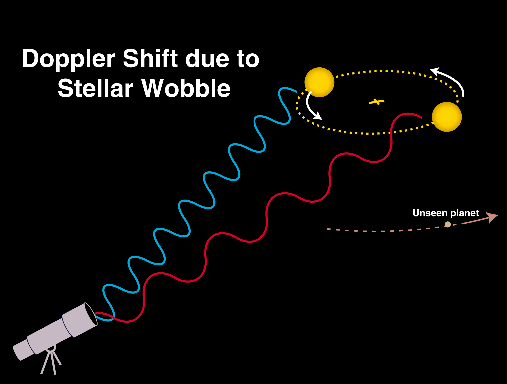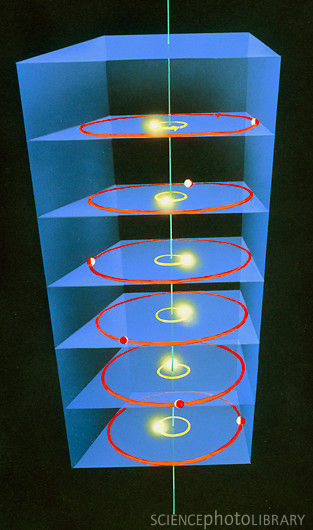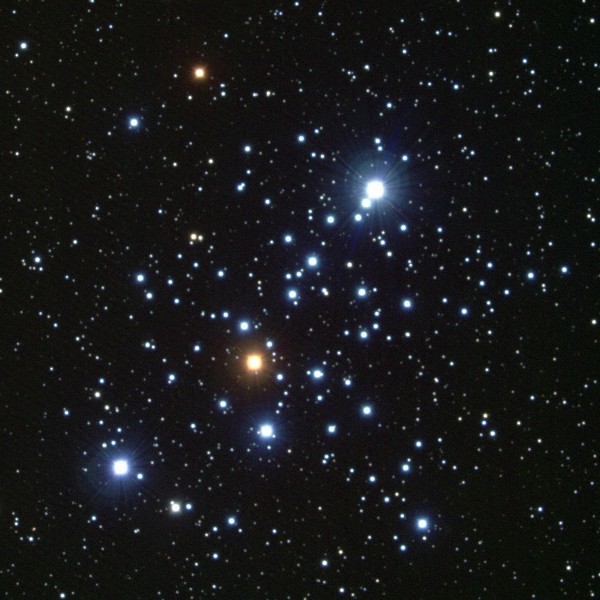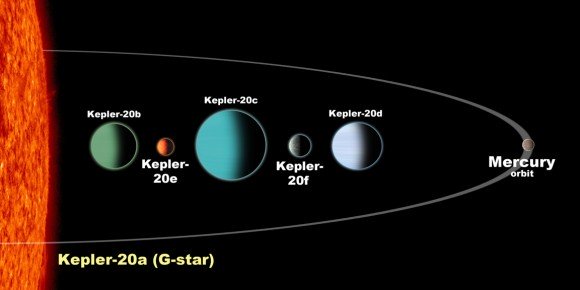"Continue to surprise those who would put you in a neat demographic. Be insistently curious." -Gordon Gee
Twenty years ago, our Solar System was the only one we knew of that we were certain had planets orbiting around a main-sequence star.
Perhaps surprisingly, it wasn't until 1995 that the first Extra-Solar Planet (exoplanet) -- or planet orbiting a star outside of our Solar System -- was discovered. And when it was, it was nothing like the planets in our Solar System. In fact, most of the earliest exoplanets discovered were not only more massive than Jupiter, but orbited their parent star even closer than Mercury orbits out Sun!
Immediately, there were astronomers (and many non-astronomers) who speculated that these Hot Jupiters were very common, and that Solar Systems like our own were perhaps rarities.
And if this sends alarm bells ringing in your head as the dumbest thing you've ever heard, I've got news for you: you're right, and you are already smarter than everyone who thought this. Here's why.
The method by which the first exoplanets were ever detected was through a phenomenon known as stellar wobble. You know that the planets orbit the Sun in ellipses, due to the laws of gravity. Well, technically, all the planets and the Sun orbit their mutual center of mass, which we approximate as being, well, the center of the Sun.
This is reasonable, because the Sun has 99.8% the mass of the Solar System! But in reality, the Sun wobbles back-and-forth in its own tiny ellipse, orbiting the center of mass that is primarily defined by Jupiter, but is still affected by the combined gravitational influence of all the planets, moons, comets and asteroids in our Solar System. So how would you detect this motion from a different Solar System?
When the star moves towards you in its orbit, the light from it becomes slightly blueshifted due to its motion towards you, and when it moves away from you, it gets redshifted an equal amount. The faster the motion, the greater the shift.
So what sort of exoplanets are you most likely to detect using this method? The ones that are most massive and closest to their star, because the closer they are, the more quickly they orbit!
In other words, we didn't find these "Hot Jupiters" because they're so common and we're so rare, we found them because those are the easiest things to see! In fact, the idea that we see more of the things that are easier to see has been around in astronomy since 1922, and is known as Malmquist bias. Let's show you what that is.
Imagine you look out at the Universe, and it's full of stars with all sorts of brightnesses -- very bright stars and very dim stars -- both near to us, at intermediate distances, and very far away. Close to us, perhaps our eyes (or telescopes) are good enough that we can find all the stars. In other words, everything above the red, solid line in the image above. But what do you see when you look at a star cluster -- like Messier 103 -- that's located very far away?
You only see intrinsically bright stars! "Maybe there only are intrinsically bright stars at large distances," say the people with no imaginations. But Gunnar Malmquist knew better. All the stars are there -- bright ones and dim ones -- but you only see the bright ones because that's all you're sensitive to!
It's incredibly obvious in hindsight, and it means that once you build a telescope that's more sensitive to light, you can see fainter objects at farther distances. This concept of Malmquist bias is also applicable to all sorts of observations and situations in astronomy.
Even looking out at a distant galaxy cluster, located nearly a billion light years away, you shouldn't be surprised that the galaxies you see are bigger and brighter than nearly all the galaxies in our local group! A very deep image like the one above (with an exposure time of over four hours) reveals fainter, less impressive galaxies, and in greater numbers than the brightest, most easily visible ones.
That's the lesson you should take away from this: you see the kinds of objects your instrument is designed to see. But just because what you're seeing far away looks different from what's close by doesn't mean it is different from what's close by. So fast forward to today, where we've got a much better, more successful way to find exoplanets than by this "primitive" wobble method.
Using the transit method, our most sophisticated planet-finding spacecraft, Kepler, has found thousands of planets, compared to the dozens that were found with the wobble method. When an exoplanet passes in between our line-of-sight and its parent star, it blocks some portion of the star's light. This temporary "dip" in the brightness of a distant star is how we can detect a planetary transit, and hence infer the existence of an exoplanet.
So, think about it for a minute: what types of planets will we be most likely to see? Which ones will be the easiest to see and verify? Well, that would be
- the biggest ones, because they'll block the most light and be the most noticeable,
- the innermost ones, because they'll be most likely to transit in our line-of-sight to the star, and
- the ones that orbit the fastest, because it takes multiple transits to confirm that this is, in fact, an exoplanet rather than just a rogue object or stellar fluctuation.
- In other words, the types of planets it's most likely to find are large inner planets: super-Earths!
The recent discovery of Kepler-22b, with an Earth-like orbit around a Sun-like star, was exactly this; it's estimated that Kepler-22b is more than 10 times the mass of Earth! In fact, the vast majority of planets found by Kepler are these super-Earths, with not a single planet found that was Earth-sized or smaller.
You can guess what's coming, can't you? Cue Physics Today, with the headline,
Super-Earths give theorists a super headache.
Any guesses, mind you, as to what the theoretical limit of how small a planet Kepler could possibly detect, at the very limit of its power?
Did you guess something just barely smaller than Earth, and only then if it's mind-bogglingly close to a star that's significantly smaller than our Sun?
Good guess! And guess what NASA just announced earlier today?
Say hello to Kepler-20e, the first exoplanet ever discovered that's smaller than Earth! (In fact, it's even smaller than Venus.) With a mass far too small to be detected by stellar wobble, Kepler-20e is only detectable via this transit method! And we're lucky Kepler's been watching this star so closely; Kepler-20 five discovered planets well inside the orbit of where our Mercury resides!
The larger planets meant that Kepler-20 was already a star of interest, and that many orbits of these planets around their stars were carefully watched. Each time a planet passes in front of its star, it blocks its light. The longer you watch it, the more sensitive you become to small but recurring light-blocking signals.
And that's exactly what we've got here: Kepler-20e, the smallest one, whips around its star every 6.1 days, while it takes Mercury -- our Solar System's speedster -- a comparatively lackadaisical 88 days. Even the fourth planet from this star, Kepler-20f, makes a complete orbit in 19.5 days. Kepler-20e is smaller than Venus, while Kepler-20f is only 3% larger than Earth! The result of all this careful watching is a Solar System where the inner five planets are all scorchingly unsuitable for life, but have a very rich orbital tale to tell.
And just like that, the delusional "super-Earth mystery" should be smashed to bits!
So don't be surprised at all the super-Earths so far, the smaller planets are just harder to see, and we're only starting to get there. By time the next generation of planet-finding telescope comes along, we're going to be rolling in Earths and mini-Earths, just you wait!
For more on this find, check out Phil Plait's, Nancy Atkinson's, and even the Telegraph's take, and for all the latest exoplanet news as it comes in, I highly recommend this collection. Kepler-20e: it's the first exoplanet we've ever found that's smaller than Earth, but it won't be the last!















BTW, "ÐоÑаÑев Роман ÐвгенÑевиÑ" in image credits can be transliterated as "Potashev Roman Yevgenyevich".
Second - 1257+12C is smaller.
Getting to be a bad habit with the Kepler team
Given that:
1) Planets in an orbit similar to Earth's will orbit ~1/y;
2) At least 3 transits are required before a planet is confirmed to exist;and
3) Kepler has only been operational since March 2009,
I predict that the first "Earth" in a 1-AU orbit will be announced in late 2012.
Wagers?
This whole 'first ever exoplanet smaller than Earth' thing isn't strictly true is it? I thought some very small ones had been discovered around pulsars a long time ago. Nitpicking perhaps...
Ethan, could you explain how much latitude Kepler has in terms of systems having to be edge-on to our vantage point? Basically if, say, 5% of randomly oriented systems were edge-on enough that we could use the transit method, then however many exoplanets we found within a certain radius we'd have to multiply by 20 to get an estimate of the true figure. But I imagine the true figure is going to be lower than 5%, maybe even lower than 1%? (Do we think that systems have essentially random orientation in all 3 dimensions?)
I know there are plenty of stars out there to look at, and if earthlike planets in earthlike orbits around earthlike stars exist, then eventually we'll see one--but it is tough to think there might be one right next door that Kepler will never see because of the orientation of the system!
That's right, two super-earths and a moon-sized object (and possibly a debris belt) were discovered around the pulsar 1257+12 a long time ago. However, since the detection method used to locate these (pulsar timing) require them to orbit around a powerful x-ray source (exactly 0% chance to be habitable), this system seems to be treated as a mere curiosity by scientist and ignored by the media. That's a shame since these were actually the first exoplanets found and it's not like 51 pegasi b is more conductive to life.
Ethan, I am thinking about a planet rotating too close to its star to be in the life supporting zone, similar to the planets around Kepler 20.
It is easy to asume that no life as we know it can develop on such a planet because of the immense heat so near to the star.
However, I assume it would be possible for a planet to have a rotational lock on its star, such as our Moon has on the Earth, showing us the same side all the time.
If such a planet would happen to have an atmosphere, which is not too dense (such as on Venus), the star pointing side would boil, and the night side should be much colder, and probably freeze, since the atmosphere with a density low enough would probably prohibit evenly spread temperature around the whole planet.
So, my question ist: would it then be possible that there might be a ring on the planet surface, along one of the meridians or slightly besides it inclining to the night side, with median temperatures supporting life???
I assume the probability of gravitational locks is relatively high because of the proximity to the star, and the probability of a thick atmosphere so near to the star's radiation might also be low enough (probably even too low, I guess the planet would need a really, really strong magnetic field to keep any atmosphere at all).
I'm curious on what you think about that and if you might know of any research on this subject.
Steinn @2, Dave @4, GH @6, planets around pulsars -- including tiny planets -- have been known since at least the 1970s. I tried very carefully to make the distinction "around a main-sequence / Sun-like star," but perhaps I didn't repeat it often enough. The techniques that Kepler uses are not useful for pulsars, and vice versa.
Monty @5, I believe this article from about 18 months ago is what you're looking for.
Tihomir @7, that is currently an active area of debate, as to whether there can be a "ring of life" around a tidally locked planet, or even two "poles of life" around one that isn't locked. Personally, I think it's less likely than on a planet with significant (but not suicidal) temperature fluctuations, but that is based mostly on what I know about biology on Earth, so I wouldn't treat it as being anything more than a hunch.
"a powerful x-ray source (exactly 0% chance to be habitable)"
There's a powerful x-ray source near me now.
It's not pointed at me, but it's powerful and I'm still alive.
If the X-Rays do not get to the planet, they're not a problem.
A bigger problem is that the star it was next to went "boom" a while ago. This was more likely to cause problems to the planet that would sterilise it.
Then again, it could have been thrown inward from a more distant orbit, so it's not a good idea to set your ideas in stone on it.
A star going nova nearby is going to sterilize everything and with no possibility of shielding. I remember reading that if our sun went nova, that the neutrino radiation would be lethal out to Jupiter's orbit.
Good article. This reminds me of how frustrated people get that we haven't found life yet elsewhere.
It's not necessarily because it's not there. It's likely because we have so few ways of detecting it.
I think you're being more than just a little disingenuous because, as I am sure you are aware, the 'primitive wobble method' has more confirmed more exoplanets than any other method. It is also an improving methodolgy becoming more sensitive over time. In August 2011, 3 super earths were discovered using just the radial velocity method, orbiting around 82 Eridani, a G-type star 19 light years away. 82 Eridani d only 'wobbled' its star by 50 cm/s, the smallest wobble yet measured!
But yes, of course I do support Kepler's continued funding, as the radial velocity method is only very slowly improving.
@Manix
I would give you exact numbers but alas my iphone was left in a friend's car. If you have an iPhone though go to the appstore and search Exoplanet. It's an amazing database app that gives pretty much every known statistic about all of the exoplanets. Even better it will send you a message anytime a new one is found. You can have the program sort the list from date discovered, mass, type of method used, etc. so pretty much any speculation we have here that app should take care of.
If even further interested they have another program that gives you all of the Keplar canidates as well. Last count if I remember correctly was around 700 confirmed and another 2000 or so in the Keplar canidates list. Oh and don't worry I'm not advertising. The app just really kicks that much ass haha.
Why is Kepler-20f drawn very Earth-like, though its orbit is closer than Mercury's? It seems like the artist took a lot of license on that one.
Just to point out the obvious here: the radial velocity and timing methods give mass but not radius, the transit method gives radius but (usually) not mass.
That means discoverers can respectively use 'lightest' and 'smallest' to characterise their discoveries without actually lying - after all, nobody knows the radii of those pulsar planets. But they are taking advantage of the ignorance of the public, as I'm sure their press officers are aware.
Great review article. Thanks
thanks for the information ( bedankt voor de informatie )